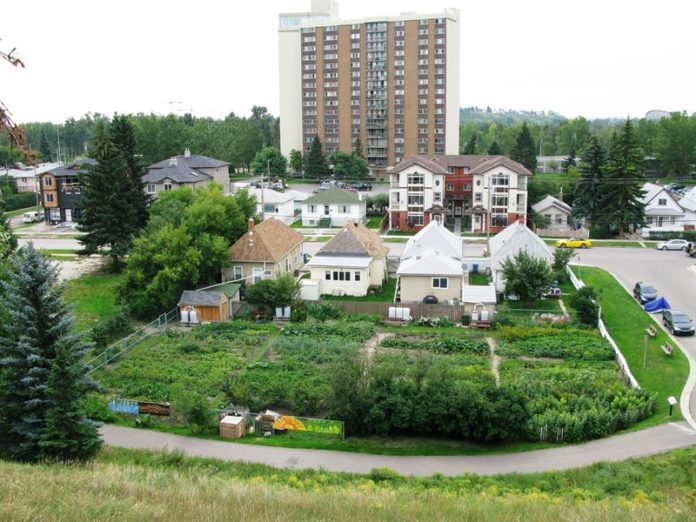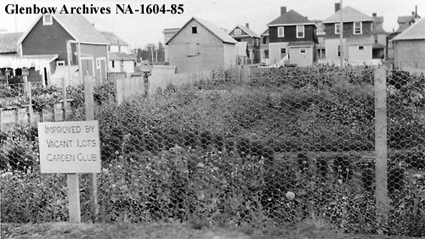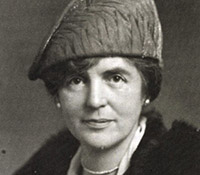
46 7 St. N.E.
The Bridgeland / Riverside Vacant Lot Garden is significant as an excellent example of a community garden and is the oldest of its type in Calgary. It is also valuable as the only known remaining community garden that was once part of the Vacant Lots Garden Club.
The Garden was established sometime between 1924 and 1930 on vacant land that was purchased by The City of Calgary in 1922 under a City programme known as the Vacant Lots Garden Club. The Vacant Lots Garden Club was an offshoot of a national movement of the same name that was inaugurated in Calgary in 1911 and formally organized in 1914. The club allowed residents to garden on empty civic property for a small fee with a twofold purpose: beautification and food supply.

The garden club was an important resource, especially for working-class citizens, in securing a high quality, affordable and local food supply through increased self-sufficiency. At the time, most produce sold in Calgary was imported from BC and was both expensive and of poor quality. The Bridgeland / Riverside Vacant Lot Garden was a great asset to the working-class, German-speaking Russian residents of the area during the Gre
at Depresssion, and with the conservation efforts associated with the Second World War. It is also remembered for its role as a ‘Victory Garden’ during the war with its products contributing to the war effort by reducing the public pressure on the food supply and allowing more food to be shipped overseas. At the same time, such gardens indirectly aided the war effort as morale boosters to those who tended them who were rewarded by the knowledge that their gardens were contributing to the war effort.
The Bridgeland / Riverside Garden also recalls the role that such gardens served in the
early beautification efforts in Calgary that was fostered by city officials. With the major economic downturn in Calgary in 1913 and the resulting halt in construction, much land within city limits remained vacant. Establishing community gardens on these lots was seen as an effective way to maintain potentially unkempt and unattractive lots.
Because of the garden’s association with the Vacant Lots Garden Club programme (1914-52), it is also a tangible reminder of the efforts of Annie Gale and early supporters of the programme.

Annie Gale was a socially progressive, recent immigrant from England who was appalled by the quality and price of the produce available in Calgary and worked tirelessly to improve the situation. Gale advocated for Calgarians to have the opportunity to be more self-sufficient in the production of their food. She was instrumental in establishing a municipal market in Calgary in 1914 which sold locally grown produce and represented the Consumer’s League on the board of the Vacant Lots Garden Club. Her work on these and other initiatives helped her to become Calgary’s first female alderman in 1918.
Of the 3,229 vacant lots that once comprised the Vacant Lots Garden Club, the three lots that form the Bridgeland / Riverside Vacant Lot Garden survive as the sole remaining garden plots that formerly constituted the programme.
Edited article courtesy of the City of Calgary Inventory of Historic Resources









